These Are The 15 Oldest Buildings In The World
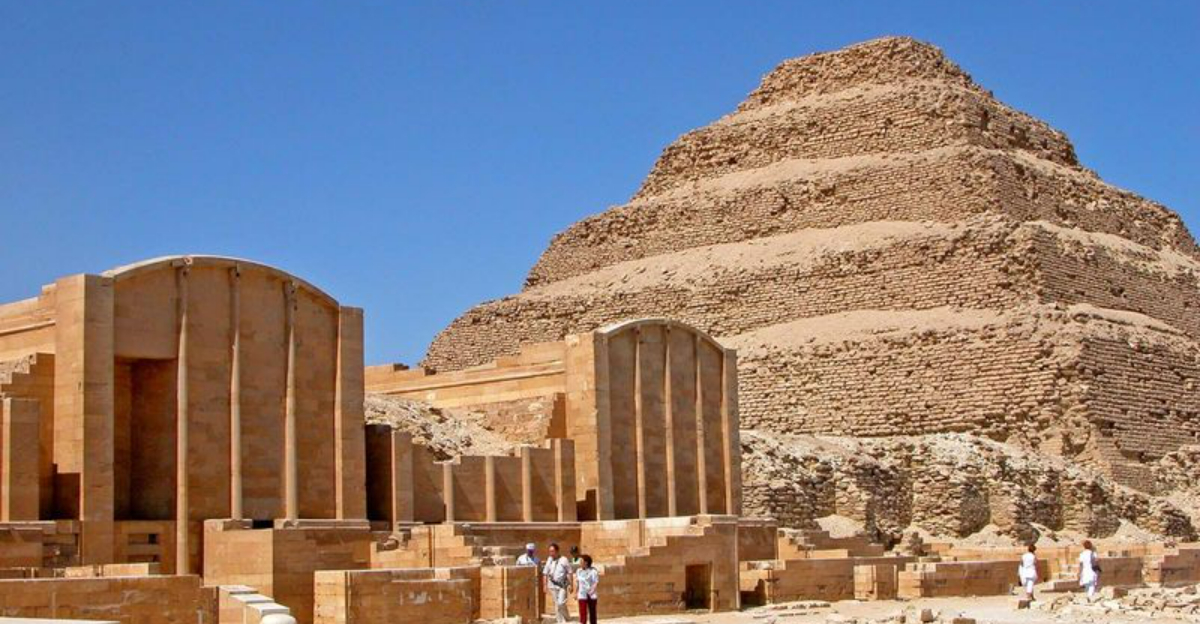
Have you ever wondered what the oldest human-made structures still standing today are? Our ancestors left behind incredible buildings that have survived thousands of years of weather, wars, and time itself.
These ancient structures give us a peek into how people lived long ago and show off the amazing building skills they had without modern tools or technology.
1. Göbekli Tepe – Turkey (9500 BCE)
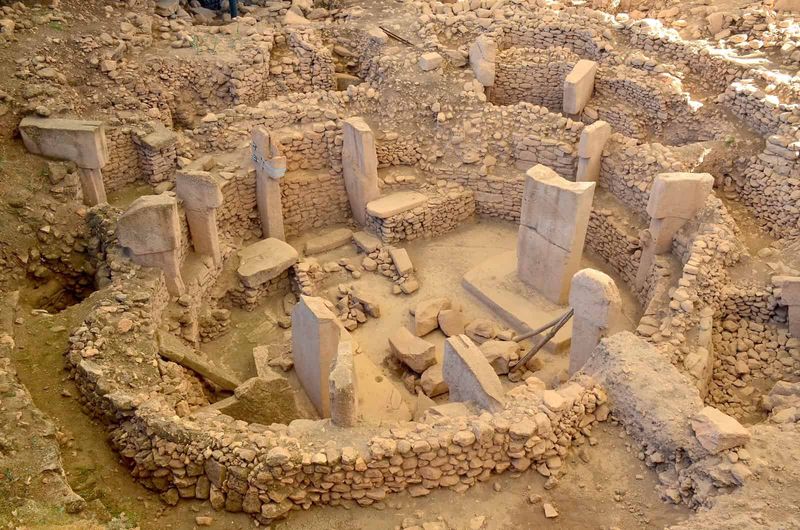
Built nearly 12,000 years ago, this mysterious stone temple complex predates agriculture and pottery! Massive T-shaped pillars, some weighing up to 20 tons, stand arranged in circles.
What’s truly mind-blowing is that hunter-gatherers somehow moved and carved these enormous stones using only primitive tools. The site completely changed what archaeologists thought about early human civilization.
Recent excavations have uncovered intricate animal carvings including lions, bulls, and birds decorating many pillars, suggesting this was a place of important rituals long before farming began.
2. Barnenez Tomb – France (4850 BCE)
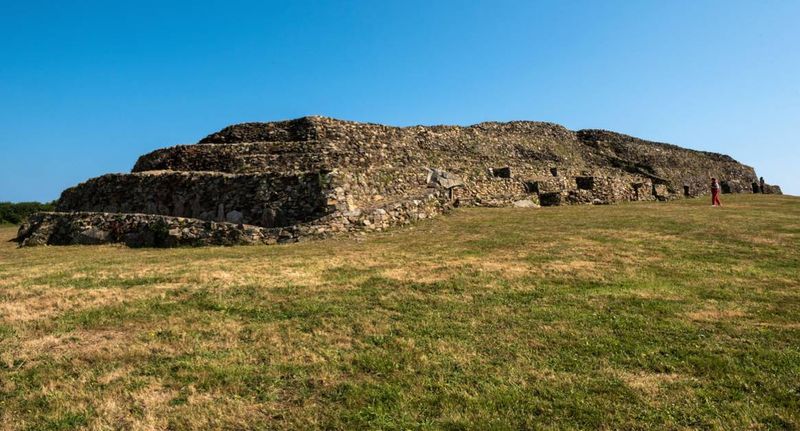
Nicknamed the ‘Prehistoric Parthenon,’ this massive burial mound stretches longer than a football field and contains 11 separate burial chambers. Located on the coast of Brittany, it predates the Egyptian pyramids by over 2,000 years!
Inside the chambers, archaeologists discovered beautiful carved stones with spiral and wavy line patterns. The huge structure required moving over 14,000 tons of stone without any modern equipment.
Despite being one of Europe’s most impressive prehistoric monuments, it remains relatively unknown to most tourists, making it a hidden treasure of ancient architecture.
3. Newgrange – Ireland (3200 BCE)

During winter solstice, something magical happens at this ancient Irish tomb. Sunlight streams through a specially designed roof box, illuminating the inner chamber for just 17 minutes each year.
The massive circular mound features a stunning white quartz façade that would have gleamed for miles around. Covering over an acre, its construction required moving 200,000 tons of earth and stone.
Hidden throughout the structure are mysterious spiral carvings whose meanings remain lost to time. Remarkably, the interior has remained completely waterproof for over 5,000 years without any modern materials!
4. Knap of Howar – Scotland (3700 BCE)
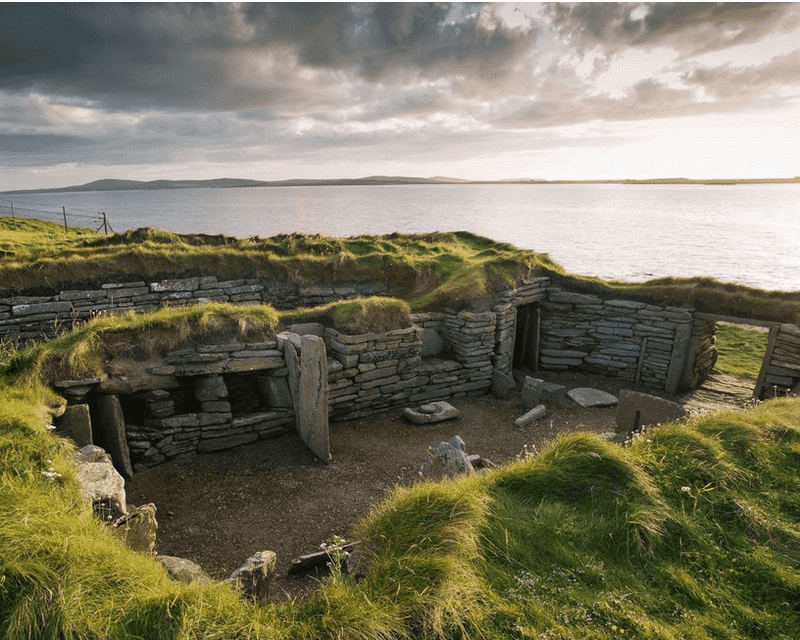
Nestled on a windswept Scottish island sits what might be the oldest preserved stone house in northern Europe. Two connected stone dwellings, built before the invention of metal tools, have survived nearly 6,000 years of harsh North Sea weather.
Stone furniture including beds, dressers, and even shelves remains intact inside these remarkably preserved homes. Archaeologists found evidence that the inhabitants were early farmers who kept cattle and sheep while also fishing.
The walls still stand nearly 6 feet tall despite being built using only stone tools and without mortar to hold the stones together.
5. Tumulus of Bougon – France (4800 BCE)

Hidden in the French countryside lies a collection of burial mounds that predate even Stonehenge by nearly 2,000 years! Five separate tombs showcase different building techniques from our Neolithic ancestors.
The largest chamber contains massive ceiling slabs weighing up to 90 tons, leaving engineers puzzled about how prehistoric people moved them. When excavated, archaeologists discovered jewelry, pottery, and tools alongside human remains from multiple generations.
Unlike many ancient sites, these tombs were continuously used for over 2,000 years, showing how important ancestor worship was to these early farming communities.
6. Megalithic Temples of Malta (3600-2500 BCE)

Scattered across the Mediterranean islands of Malta and Gozo are the world’s oldest free-standing stone structures. These impressive temples predate both Stonehenge and the Egyptian pyramids!
The builders created curved walls using massive limestone blocks weighing several tons each, some decorated with spiral carvings and animal designs. Many temples align perfectly with the sun during solstices, showing their creators had advanced astronomical knowledge.
Famous for their ‘fat lady’ statues, these temples were likely dedicated to a fertility goddess. The complex construction methods used suggest a highly organized society existed on these small islands thousands of years ago.
7. Skara Brae – Scotland (3180 BCE)
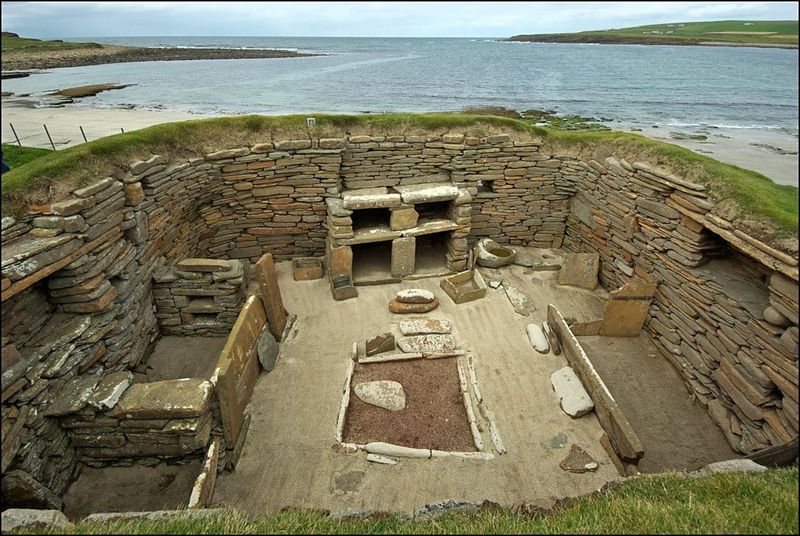
A violent storm in 1850 ripped away sand dunes on the Orkney Islands, revealing what looks like a Stone Age version of a modern housing development! This perfectly preserved Neolithic village includes eight connected houses with built-in stone furniture.
Each home features stone beds, dressers, shelves, and even waterproof storage boxes. The houses were connected by covered passages and had sophisticated drainage systems to handle waste.
Abandoned around 2500 BCE for unknown reasons, the village was buried by sand for over 4,000 years, preserving it so well that it’s often called the “Scottish Pompeii” – though it’s actually much older!
8. Tarxien Temples – Malta (3150 BCE)
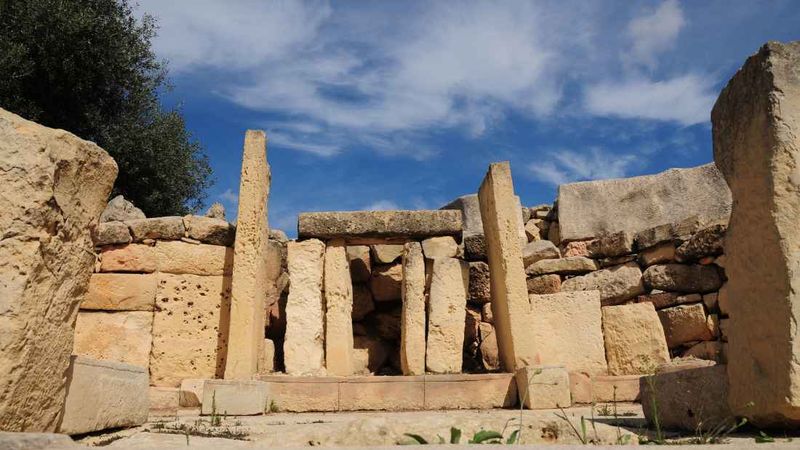
Discovered by farmers in 1913, this massive temple complex features some of the earliest and most impressive stone carvings in human history. Spiral patterns, animal reliefs, and even a famous “fat lady” statue show the artistic skill of Malta’s ancient temple builders.
Enormous stone blocks weighing up to 20 tons were somehow moved and precisely fitted together without metal tools or wheels. Evidence suggests the temples were once brightly painted and may have had wooden roofs.
Used for over 1,000 years, the site later became a Bronze Age cremation cemetery, showing how sacred spaces can change purpose over millennia while remaining important to local communities.
9. West Kennet Long Barrow – England (3650 BCE)
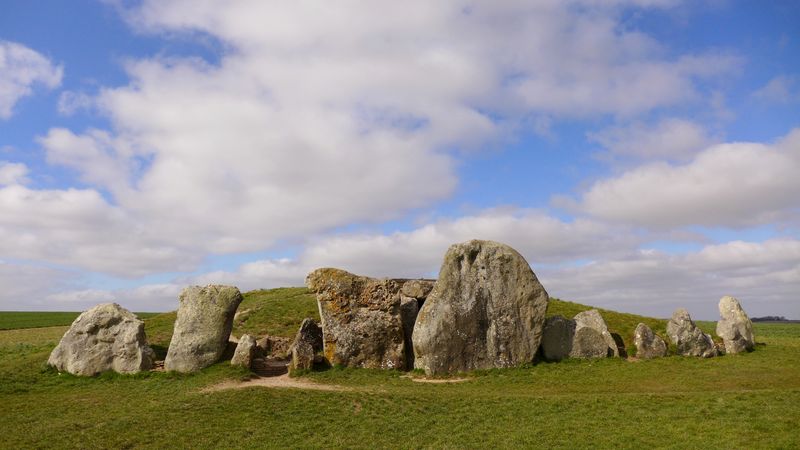
Imagine walking into a stone tomb that was already ancient when the pyramids were being built! This 100-foot-long burial mound contains five separate chambers made from massive stones weighing up to 40 tons each.
At least 46 people were buried here over several centuries, along with pottery, beads, and tools. The entrance faces the rising sun during the winter solstice, suggesting its builders had knowledge of astronomy.
Unlike many ancient sites, you can still enter this 5,600-year-old structure today and stand in the same chambers where Stone Age people performed funeral rituals for their community members.
10. La Hougue Bie – Jersey (3500 BCE)
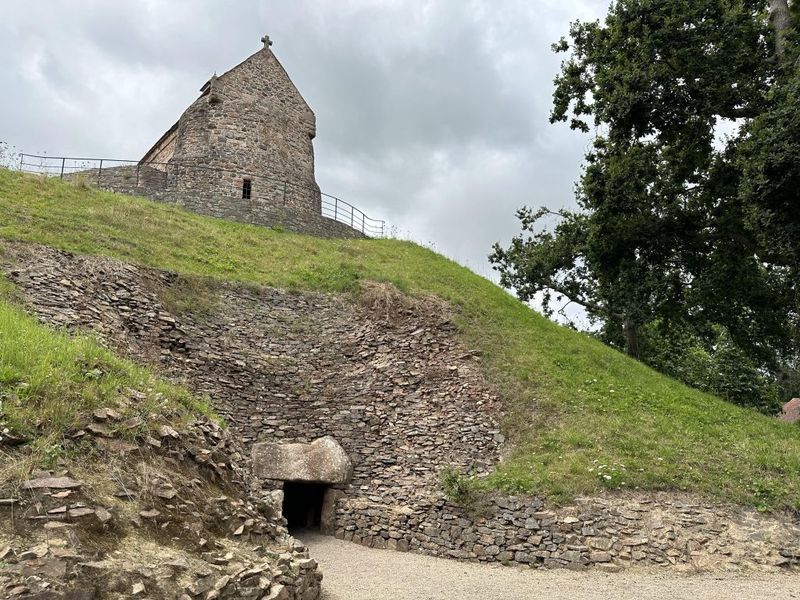
Hidden beneath a medieval chapel on the island of Jersey lies one of Europe’s best-preserved passage graves. The 33-foot entrance tunnel is perfectly aligned to catch the sunrise during equinoxes, filling the inner chamber with light.
Crawling through the narrow passage feels like traveling back in time 5,500 years! Inside, the chamber opens up to a 19-foot ceiling made of massive capstones, an incredible engineering feat for Stone Age builders.
During World War II, the Germans built a command bunker beside this ancient site, creating a strange juxtaposition of prehistoric and modern military structures that span thousands of years of human history.
11. Dholavira – India (3000 BCE)
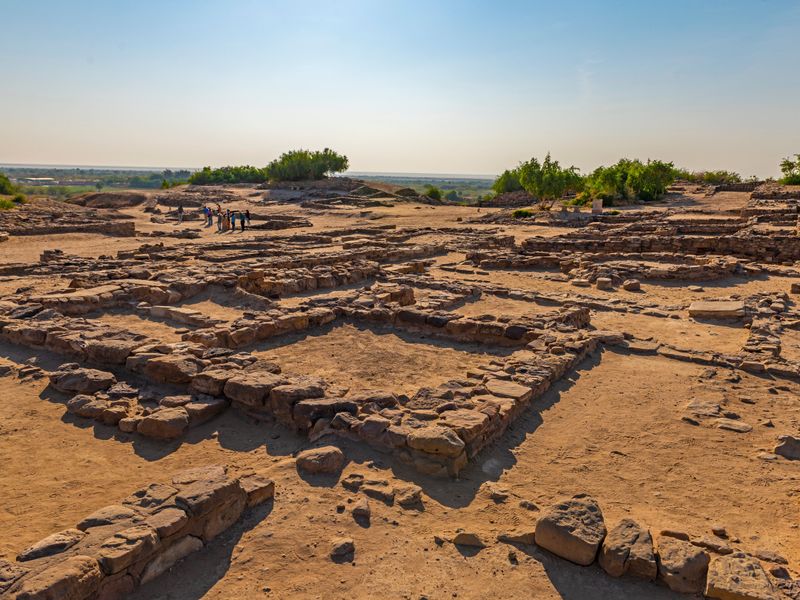
Located on an island in India’s seasonal salt desert, this ancient city featured sophisticated water management systems that would impress modern engineers. Massive reservoirs collected precious rainwater, ensuring survival in this harsh environment for over 1,500 years.
The city was built in precise geometric proportions with an elaborate layout including separate areas for different social classes. At its entrance stands the world’s first known signboard – a mysterious inscription in Indus script that remains undeciphered.
Despite being built from mud bricks, many structures have survived 5,000 years of monsoons and earthquakes, testifying to the advanced building techniques of the Indus Valley Civilization.
12. Sechin Bajo – Peru (3500 BCE)
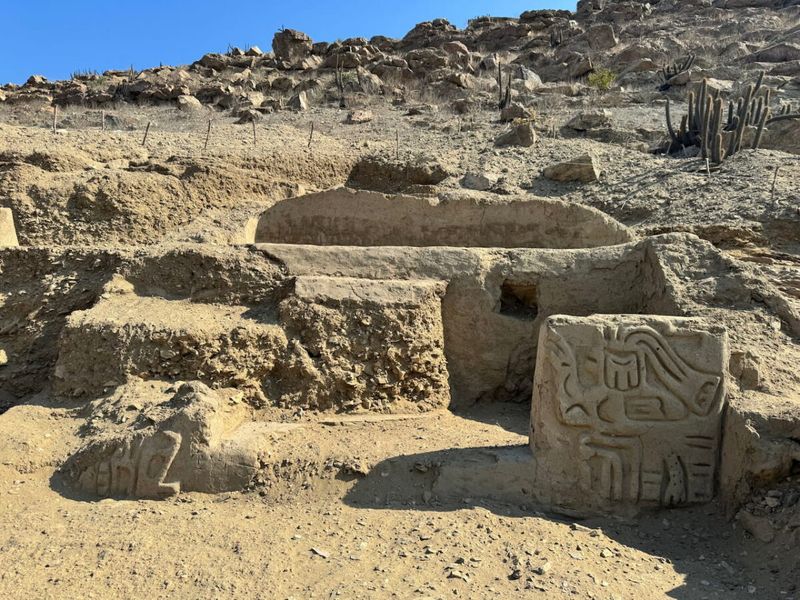
Hidden in Peru’s Casma Valley lies what might be the oldest stone building in the Americas, challenging everything we thought we knew about early civilization in the Western Hemisphere. Carbon dating shocked archaeologists by revealing structures dating back 5,500 years!
The complex features a circular plaza sunken into the ground, surrounded by platforms and mysterious carved stone monoliths. Some stones display disturbing carvings of dismembered human bodies, suggesting ritual sacrifice may have occurred here.
Most amazingly, evidence shows the site was continuously used and expanded for over 2,000 years, making it one of the longest-occupied ceremonial centers in ancient American history.
13. Pyramid of Djoser – Egypt (2670 BCE)
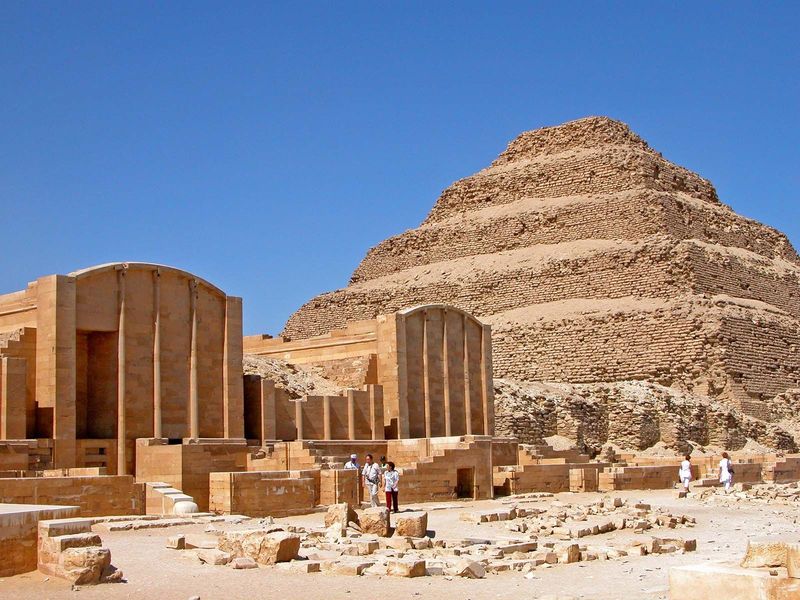
Standing in the desert near Cairo is humanity’s first large-scale stone building – the revolutionary step pyramid that forever changed architecture. Built for Pharaoh Djoser by the genius architect Imhotep, this six-layered monument launched Egypt’s pyramid-building age.
Before this innovation, royal tombs were simple flat-roofed structures called mastabas. Imhotep’s brilliant idea was to stack six increasingly smaller mastabas on top of each other, creating the stepped pyramid shape.
Around the pyramid stands an incredible complex of courtyards, temples, and dummy buildings forming a massive stone playground for the pharaoh’s afterlife, all enclosed within a mile-long wall.
14. Cairn of Barnenez – France (4500 BCE)

Often called the “Prehistoric Parthenon,” this massive stone mound contains 11 separate burial chambers and stretches longer than a football field! Built before metal tools existed, it predates the Egyptian pyramids by 2,000 years.
The builders used different construction techniques for each chamber, suggesting it was expanded over many generations. Beautiful carved stones featuring wavy lines, spirals, and axe shapes decorate the interior passages.
Despite being one of Europe’s most important prehistoric monuments, it was nearly destroyed in the 1950s when a contractor started mining it for stone. Luckily, archaeologists stepped in just in time to save this irreplaceable treasure.
15. Ħal Saflieni Hypogeum – Malta (3300-3000 BCE)
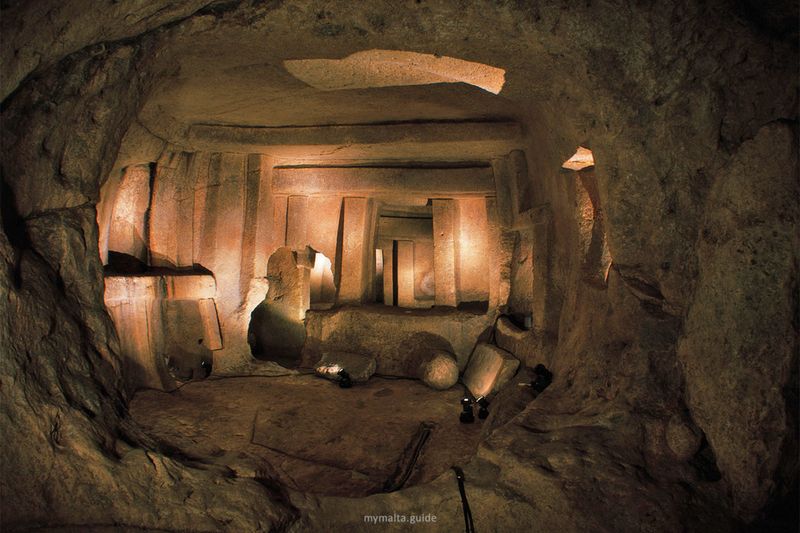
Accidentally discovered in 1902 during construction work, this underground temple complex was painstakingly carved from solid limestone using only stone tools. Three levels deep and covering 500 square meters, it contains over 30 chambers with incredible acoustic properties.
In the “Oracle Chamber,” a male voice at a certain pitch creates vibrations that can be felt throughout the entire complex! Red ochre spiral paintings decorate walls and ceilings, similar to designs found in above-ground Maltese temples.
The remains of over 7,000 people were found inside, some showing signs of elongated skulls. The entire complex was carved to mimic the architecture of Malta’s above-ground stone temples.
